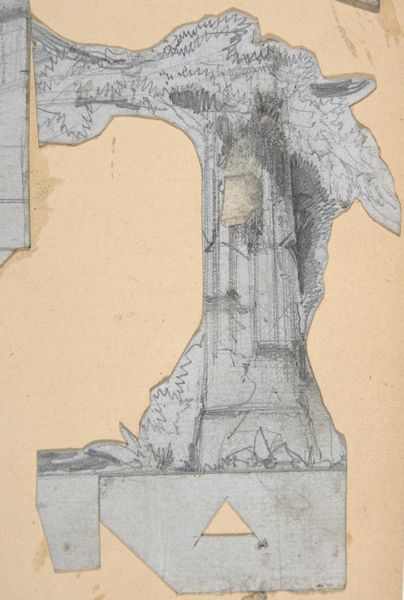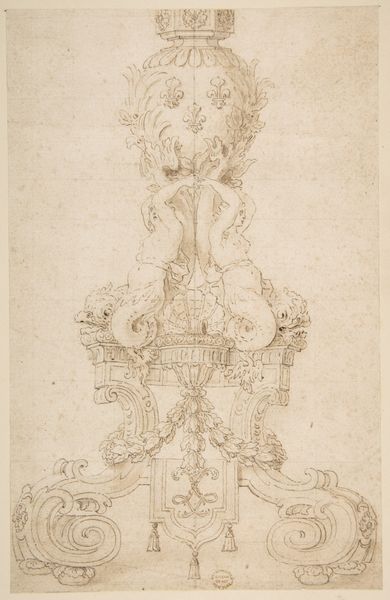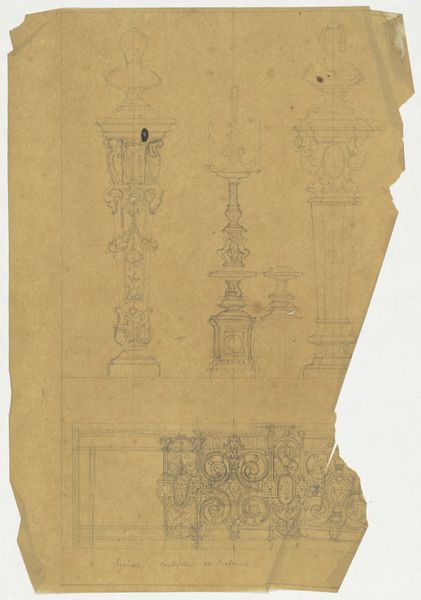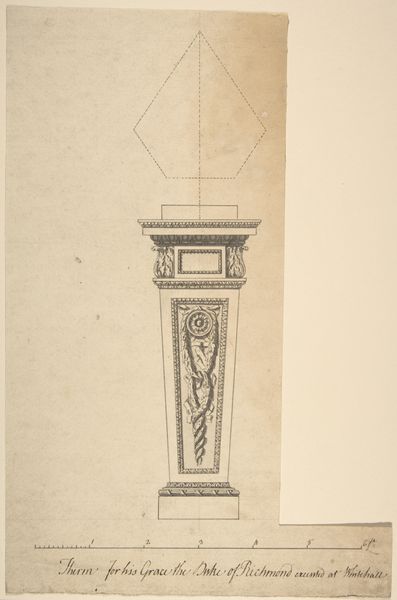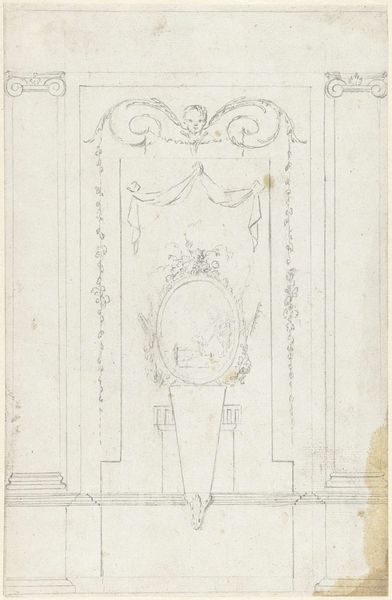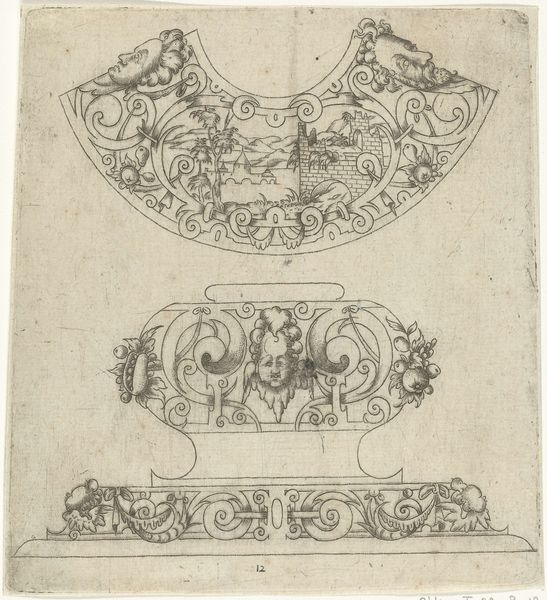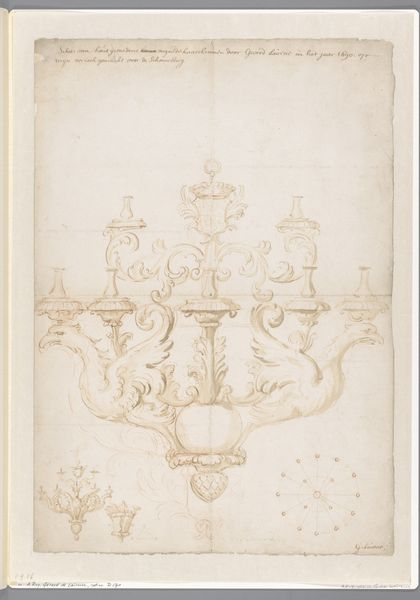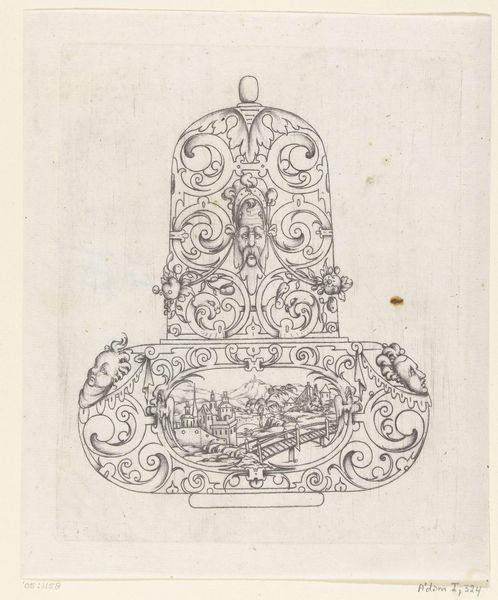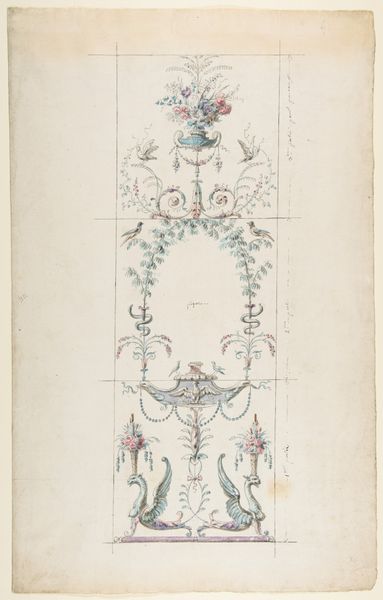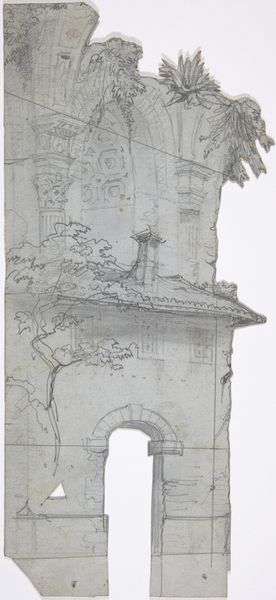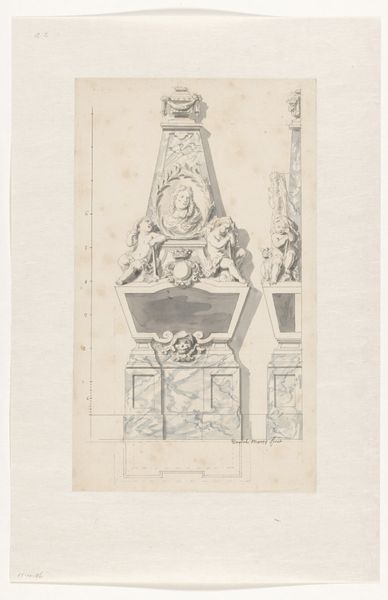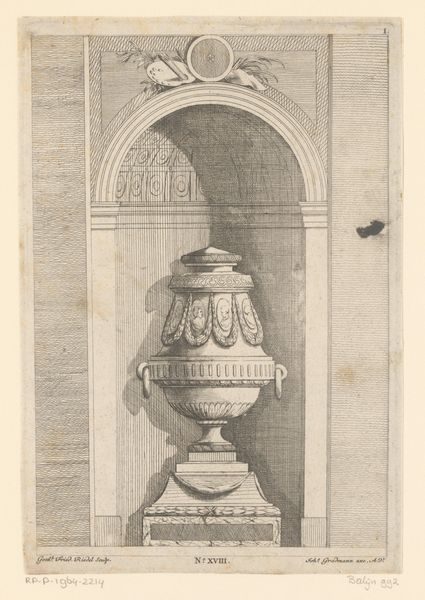
Design for a Stage Set at the Opéra, Paris 1830 - 1890
0:00
0:00
drawing, print, pencil
#
drawing
# print
#
charcoal drawing
#
pencil
#
history-painting
#
academic-art
Dimensions: Irregular sheet: 10 3/8 x 4 1/2 in. (26.4 x 11.4 cm)
Copyright: Public Domain
Editor: Here we have Eugène Cicéri's "Design for a Stage Set at the Opéra, Paris," likely created between 1830 and 1890, using pencil, charcoal and other drawing media. I'm struck by the almost whimsical, layered quality. How might this relate to the opera it was designed for? Curator: This design offers a glimpse into the grand spectacle that opera represented in 19th-century Parisian society. Consider the Opéra itself – it was a powerful institution, a space where social status and political influence were on full display. Editor: So the sets were a part of that performance of power? Curator: Precisely! The elaborate sets, like this one, reinforced the opera's status and served as a visual representation of the stories being told on stage. Ask yourself, what kind of narratives might be deemed suitable for this public stage? What sort of experience did it deliver for audiences attending in person? Editor: Given the historical context, could the exotic details or the depiction of, say, those vaguely Asian feline figures, be interpreted as a reflection of French colonialism and the "Orientalist" aesthetic prevalent at the time? Curator: Absolutely. Stage design in this period actively participated in the construction and reinforcement of certain narratives and attitudes, often reflecting and even celebrating imperial ambitions and colonial views. The opera became a theater for performing cultural fantasies. How do you think this resonates today? Editor: That makes a lot of sense, and it definitely gives me a lot to think about regarding the role of art and spectacle in shaping public perception, then and now. Curator: Exactly. By studying stage designs, we are analyzing the socio-political landscape that framed them. It becomes a very compelling intersection of art and cultural commentary.
Comments
No comments
Be the first to comment and join the conversation on the ultimate creative platform.

